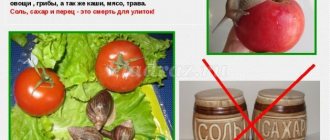MAGAZINE Preschooler.RF
Summary of educational activities for speech development in the senior group using ICT “Mushrooms in the autumn forest”Integration of educational areas: “Cognitive development” , “Speech development” , “Socio-communicative development” , “Physical development” .
Tasks:
1. Consolidate ideas about the forest.
Introduce the names of mushrooms, their external characteristics, structure ( “Cognitive development” )
2. Clarification, expansion and activation of the dictionary on the topic “Mushrooms” . Learn to coordinate numerals with nouns, form adjectives from verbs; consolidate the use of prepositions. ( "Speech Development" )
3. Formation of skills of cooperation, mutual understanding, goodwill, independence, responsibility. Fostering love and respect for nature. ( "Socio-communicative development" )
4. Development of visual attention and perception, coordination of speech with movement. ( "Physical development" )
Preliminary work: reading a fairy tale and watching the cartoon by V. Suteev “Under the Mushroom” .
Equipment: baskets, handout cards with images of edible and inedible mushrooms, dummies, tape recorder, recording “Voices of the Forest” , “hemp” (modules), subject pictures “Mushrooms” (boletus, boletus, chanterelles, fly agaric, toadstool, camelina, white mushroom, butterdish, honey fungus), “Mushrooms” .
ICT tools: presentation, projector, screen.
Methodological techniques.
- Creating an entertaining situation.
- Methods of verbal transmission (explanation, story, conversation)
- Visual methods (observation, showing a sample, showing a method of action and teaching aids.
- Game methods (finger gymnastics, physical education, breathing exercises)
Logic of educational activities:
I. Organizational moment.
1) Greeting.
- Hello guys!
2) Motivation for the lesson.
Emotional mood: the recording of “Voices of the Forest”
Educator: Guys, today I want to offer you a trip to the autumn forest. And to get to the forest, you need to take a bus and go far from the kindergarten.
And during our journey, I invite you to guess the riddle.
Who stands on a strong leg? In the brown leaves by the path? It looks like an umbrella, only a hundred times smaller.
If there is a thunderstorm on the horizon, He is very happy, If it is raining and warm, He considers himself lucky!
-Children's answers. (Mushroom)
Educator: Correct! We'll go mushroom hunting today. What can we find out about them in the forest?
Children: names of mushrooms, where they grow, how to collect them.
Educator: Okay. We'll find out.
Guys, here we are. (we get off the bus).
Here is the forest. Hello forest, dense forest, full of fairy tales and miracles.
Guys, remember we read a fairy tale and watched the cartoon “Under the Mushroom” . What surprised the ant when the rain stopped and he got out from under the mushroom?
Children: At first there was not enough room for one ant, but then there was a place for everyone.
Educator: How did it happen that at first it was cramped under the mushroom and alone, and then
Was there a place for all five?
Children: While it was raining, the mushroom grew.
Educator: That's right, mushrooms grow after rain.
It is not without reason that the proverbs say: “If there is rain, there will be mushrooms . And at what time of year are there the most mushrooms?
Children: In autumn.
Educator: And there is a proverb about this: “Spring is red with flowers, and autumn is red with mushrooms .
-You and I have found ourselves in the real kingdom of mushrooms.
Mushrooms are very diverse. Can all mushrooms be picked?
Children: no, there are edible and inedible (poisonous)
Educator: why are mushrooms called inedible?
Children: They should not be eaten.
Educator: Correct! Remember that not every mushroom goes into the basket. There are mushrooms that are poisonous (inedible). They contain poison that can cause poisoning. You should only collect mushrooms that are well known to you. And about those who put poisonous mushrooms in the box, they say: “Walking in the forest means seeing death right on your nose . Please look at the pictures and try to determine which mushrooms are inedible.
Children: fly agaric.
Educator: Correct, but there is also a pale toadstool, false honey mushrooms.
(Demonstration and story by the teacher).
Fly agaric is the most common poisonous mushroom. The leg is long, there is a white collar. The hat is red, round, with white speckles.
Near the forest on the edge, decorating the dark forest, a poisonous fly agaric, as colorful as parsley, grew.
Red hat with polka dots, collar on a thin stem. This mushroom is beautiful to look at, but dangerous and poisonous.
Isn't that right, handsome? Scarlet caftan, white specks.
“The fly agaric is red, but dangerous for health . But don’t rush to knock down fly agarics with your feet and trample them. In the forest, fly agaric is a necessary mushroom. It is poisonous to humans, but suitable for forest dwellers. Deer greedily search for fly agarics and eat them. Snails and slugs gnaw holes in the caps of fly agarics. Squirrels even dry them for the winter. For medicinal purposes. People, by the way, have also already learned to use fly agarics as a cure for some serious diseases.
Pale toadstool is a deadly poisonous mushroom. The leg is long, at the root there is a sac from which the mushroom grows, the collar, cap is round, uneven,
pale in color. I'm not used to being liked. Anyone who eats me will get poisoned.
Guys, I ask you to look carefully at the pictures and remember the poisonous mushrooms.
Finger gymnastics “Mushrooms” One, two, three, four, five! “Walking” with their fingers on the table
We are going to look for mushrooms (They begin to bend one finger at a time
This finger went into the forest, This finger found a mushroom, This finger began to clean, This finger began to fry,
This little finger ate everything and that's why he got fat.
Educator: Mushroom picking is called “silent hunting” . We are not masters in the forest, but guests. And since you’ve already come to visit, respect the owners of the forest: the plant and animal forest people. For regular hunting they go with guns, and for mushroom hunting - with knives.
But before picking mushrooms, we must learn the rules for picking mushrooms:
- Mushrooms can only be collected with adults who know the forest well;
- Do not pick or trample poisonous mushrooms - many forest inhabitants need them;
- Do not dig up the mycelium with a stick—it may dry out without being covered with leaves;
- Do not pick mushrooms near the roadway;
- Collect only known mushrooms;
- Do not pick old or very small mushrooms.
- Cutting the mushrooms carefully with a knife, rather than picking them, can damage the mycelium.
What is mycelium?
Children: find it difficult to answer.
The teacher gives the concept of mycelium.
Educator: Mushrooms should not be picked, but cut. And for what?
Children: In order not to pull out the mycelium - the roots of the mushrooms. Without mycelium, new mushrooms will not grow.
Educator: That’s right, mushrooms cannot be pulled out of the ground along with the mycelium. Having destroyed the mycelium, you will no longer find mushrooms in this place. But the mycelium of some mushrooms live for hundreds of years! If you find a forest treasure - a young fresh mushroom, you need to cut it off with a knife. Lightly sprinkle the mycelium with soil, cover it with leaves or a branch of pine needles and press firmly with your palm so that the mushroom grows again next year. A real mushroom picker, when he finds a good mushroom, will first admire it, remember where this mushroom grew, and only then carefully cut it off and put it in a basket with the cap down. These are the gifts the forest gives us!
Now, you mushroom pickers. Let's walk quietly through the forest, inhale the fresh smell of fallen leaves (breathing exercises), and collect mushrooms. We carefully look at our feet, lift the lower branches (collect mushrooms). Children get up and walk around the room, finding arranged mushrooms (dummies) and putting them in a basket.
Then the children sit on the “stumps” (arranged in a semicircle)
Educator: How can you describe in one word what you collected?
Children: Mushrooms.
Teacher's story about mushrooms.
Mushrooms grow in the forest: in clearings, on the edges, under trees, in the grass and even on stumps. Mushrooms have a cap and a stalk.
The teacher shows one mushroom at a time and describes with the child the appearance and structural features (size, shape and color of the cap and stem, growth characteristics)
WHITE MUSHROOM - the cap is brown, round, the stem is thick. I’m used to standing in a remote forest.
Pictures upon request white mushroom
BEREOZOVIC - grows mainly under birch trees, the cap is round, the stem is thin, tall, the cap is dark brown.
Pictures upon request: boletus under a birch tree
Aspen Boletus - with a red hat, high leg.
Pictures upon request boletus
CHANTERELLE - yellow in color, with a low stem, concave cap.
Pictures upon request of foxes
MUSCHINES - light brown mushrooms on thin stalks with a “collar” , grow in “families” .
Pictures upon request honey mushrooms
Where do honey mushrooms like to grow? (Children's answers). That's right, on the stumps. The word "honeycomb" comes from the word "stump" . You can collect a whole basket of honey mushrooms from one stump.
This is OIL
Pictures upon request Boletus in the forest
The guys are so friendly that whole families climb out of the ground. Butterflies are pine babies. This means what kind of trees do they like to grow under?
Children: Under the pines.
Educator: Look, both a blade of grass and a needle are stuck to the butter hats. Why?
Children: probably because they are sticky and oily.
Educator: Yes, because their hat is shiny and sticky, as if greased with oil. Very tasty boletus mushrooms.
Introduce children to polysemantic words: chanterelles, hat, leg.
Explain the difference in the meanings of these words. By comparison.
Physical education minute:
All the little animals at the edge of the forest were looking for milk mushrooms and milk mushrooms, squirrels were jumping, saffron milk caps were being picked. The little fox ran, collected little foxes, the little bunnies galloped, looking for honey mushrooms. The bear passed by and crushed the fly agaric.
Educator: Guys, after we have collected the mushrooms, can we eat them right away?
Children's answer: No.
Educator: They need to be cooked, so we’ll find out if you know how to cook mushrooms.
Exercise “What mushrooms” (learning to form verbal adjectives).
- If you boil mushrooms, they will be boiled
- and if you fry mushrooms, then they will be fried
- if you pickle them, they will be salted, - if you pickle them, they will be pickled, - if you dry them, they will be dried.
Educator: how many mushrooms we collected! Let's count them.
Exercise “Count” (to coordinate numerals with nouns)
1 mushroom,.., 3…, 5… 1 chanterelle 3…, 5… 1 honey mushroom, 3…, 5…
Educator: Guys, our walk has come to an end, it’s time to return to kindergarten. Please go to the bus and take your seats.
Final part.
Educator:
And on the way back, we will sum up the results of our walk.
What new have you learned? What types of mushrooms are there? Which mushrooms can you pick and which ones can’t? (Children's answers)
Children: Where mushrooms grow, edible and inedible, parts of a mushroom, rules for collecting mushrooms.
Educator: Well done! (Adds)
And at home, I will ask you and your parents to clarify why you can’t pick mushrooms near the roadway and near factories and factories?
Educator: Guys, you and I followed all the rules of the forest and the forest inhabitants decided to thank us. They handed you treats.
Mushroom cookies to children .
| Next > |
Abstract of the educational activity “Mushrooms” for introducing children to the world around them in the senior group
Educator:
That's right, squirrels sometimes dry them for the winter.
And moose swallow them whole, sometimes several at a time. For what? ( children's answers
).
Educator:
Fly agarics for moose are a medicine that helps them get rid of worms. That's it! In general, there is nothing unnecessary in nature. If a person doesn’t need something, someone else may need it.
Educator:
Remember, guys, fly agaric and toadstool are poisonous mushrooms and they are inedible for humans.
Repeat - inedible mushrooms (children repeat).
Educator:
Now you know which mushrooms are edible and which are poisonous.
Physical education and gymnastics for the eyes “Rain”.
Educator:
Guys, hold hands and let's walk along the winding path into the forest.
(Children follow the teacher like a snake, stand in a circle for eye exercises “Rain”
).
Educator:
The first drop fell - drop!
( Finger imitate the movements of a drop with a finger and follow with their eyes
)
And the second one ran...
We looked at the sky: (Looking up)
The droplets began to sing "drip-drip".
Our faces got wet, we wiped them. (Wipes face with hands)
The shoes - look - they became wet. (Point hands down and look at feet)
We will shrug our shoulders together,
Let's shake off the droplets. (Move their shoulders from side to side, hands on the belt)
We will run away from the rain, (They run after each other in a circle)
Let's sit under a bush. (Squat
)
Educator:
What do you call people who pick mushrooms? (mushroom pickers)
Educator:
That's right - people who go into the forest to pick mushrooms are called mushroom pickers. Mushroom picking is called “silent hunting.” Why do you think? (Children's answers).
Educator:
We are not masters in the forest, but guests. And since you’ve already come to visit, respect the owners of the forest: the plant and animal forest people. How to behave correctly in the forest? (Children's answers).
Educator:
Don't make noise, don't litter, don't trample, don't pick mushrooms by the roots.
Educator:
For regular hunting they go with guns, and for mushroom hunting - with knives. Why, do you know? (Children's answers).
Educator:
Real mushroom pickers take care of the forest and never pull mushrooms out of the ground by the roots, as this can damage the mycelium, and then small mushrooms will not grow in this place. The mushroom must be carefully cut with a knife.
Consolidation
Didactic game “Which mushroom do we take?”
Educator:
I suggest collecting mushrooms in a basket. I name a mushroom, if it’s edible, you clap your hands, if it’s inedible, you stomp your foot, and we don’t take this mushroom.
(game being played)
Didactic game “Collect a picture” - cut pictures prepared on the table.
Educator:
Oh, while you and I were picking mushrooms in a basket, someone scattered mushrooms on the table.



